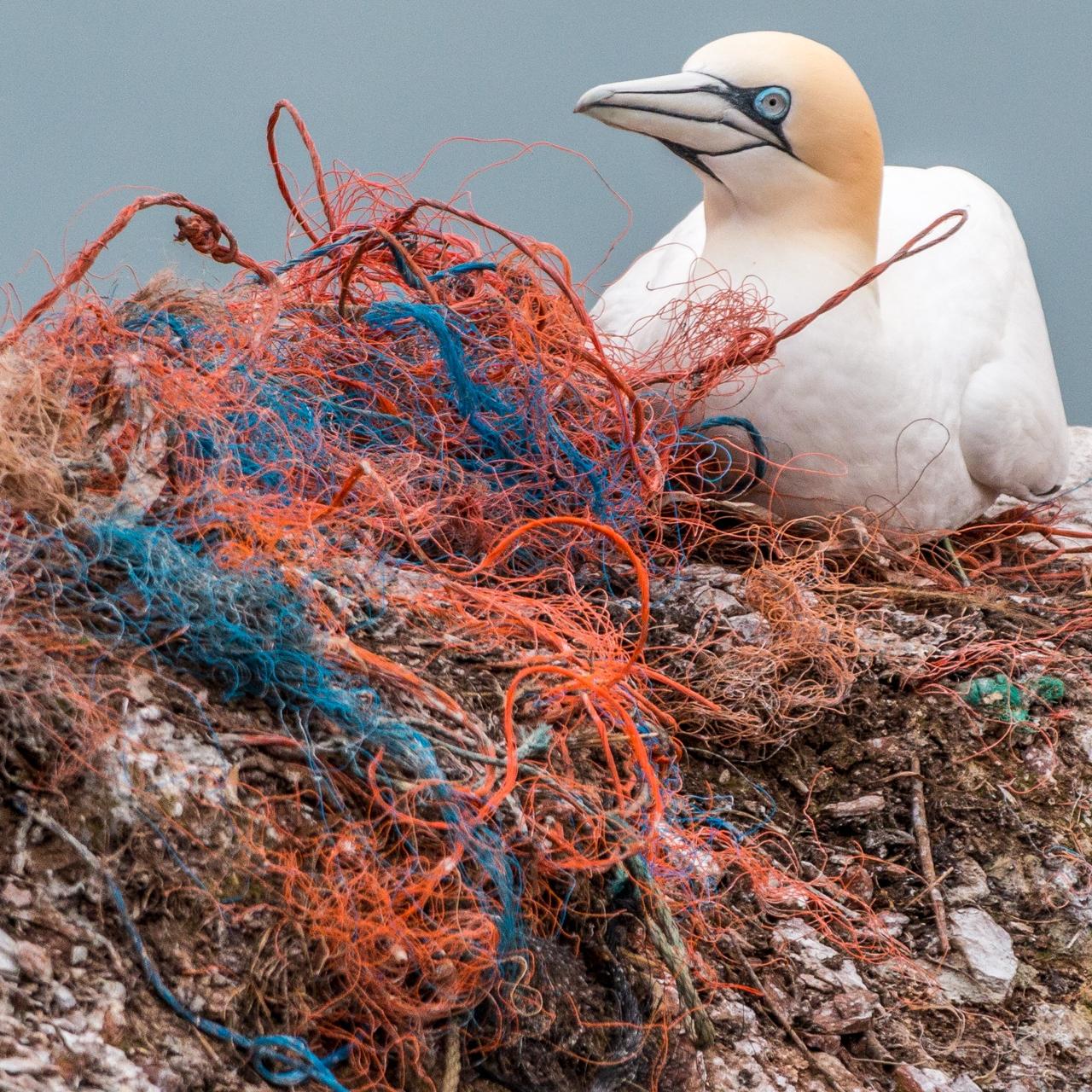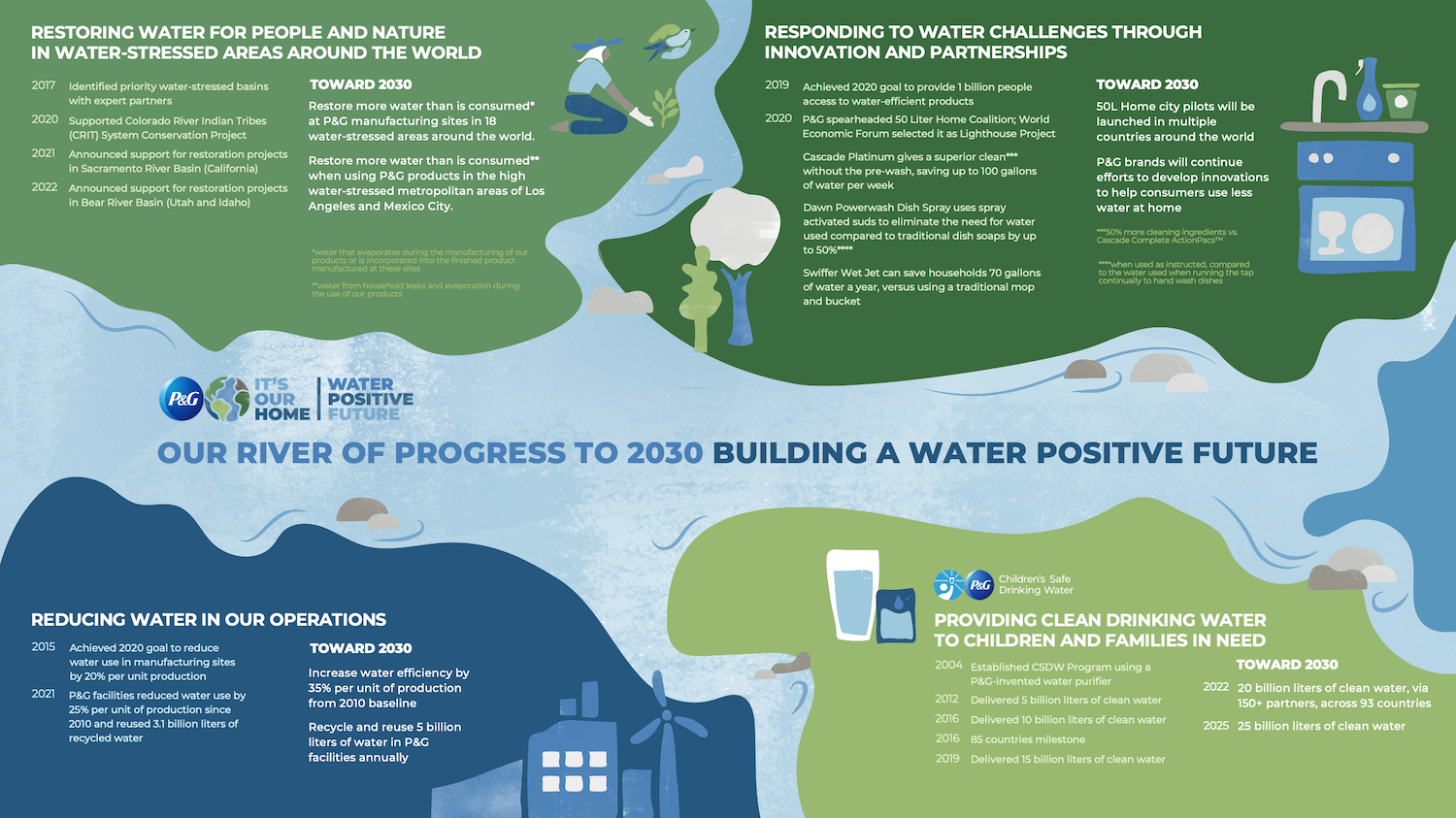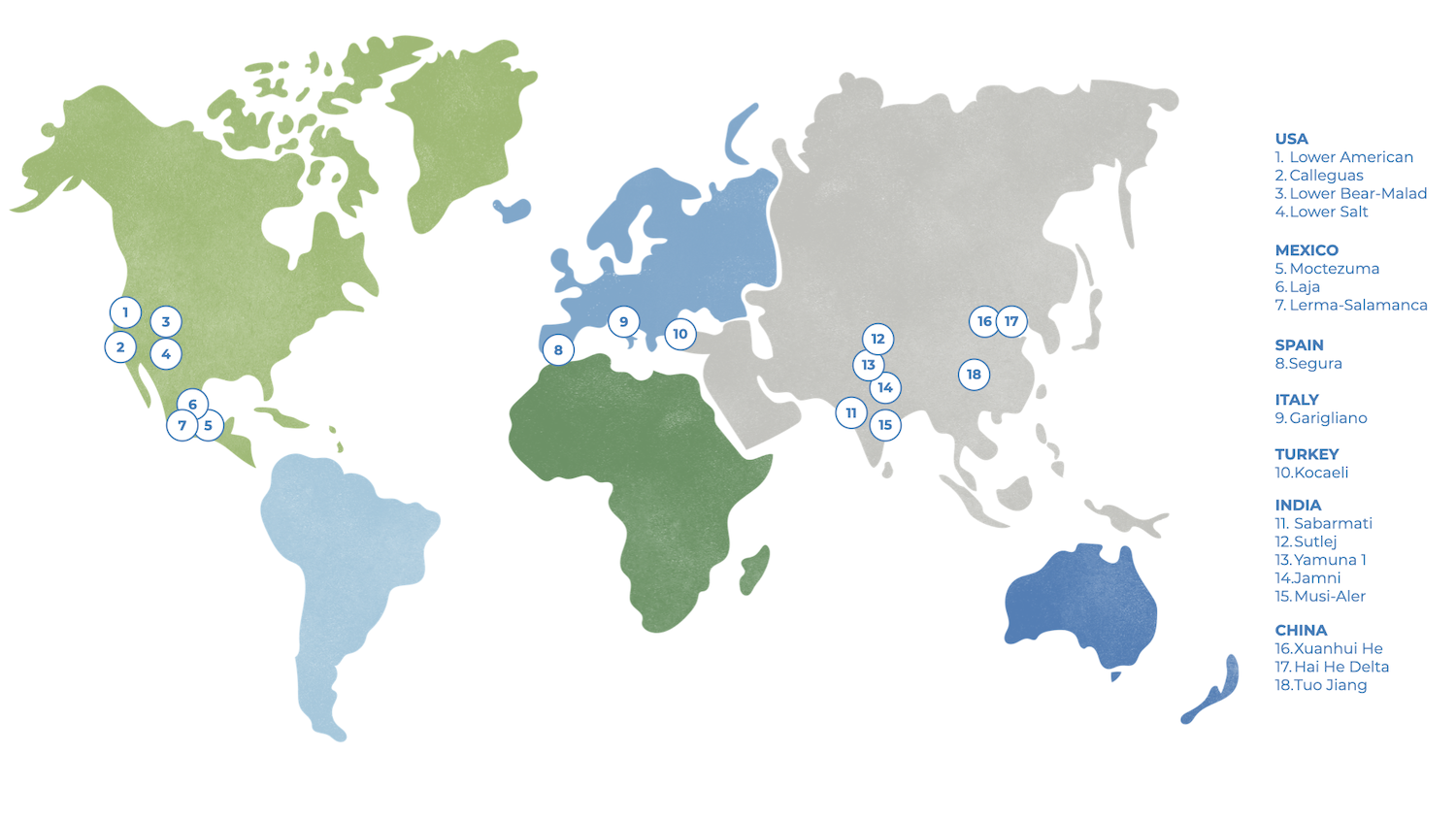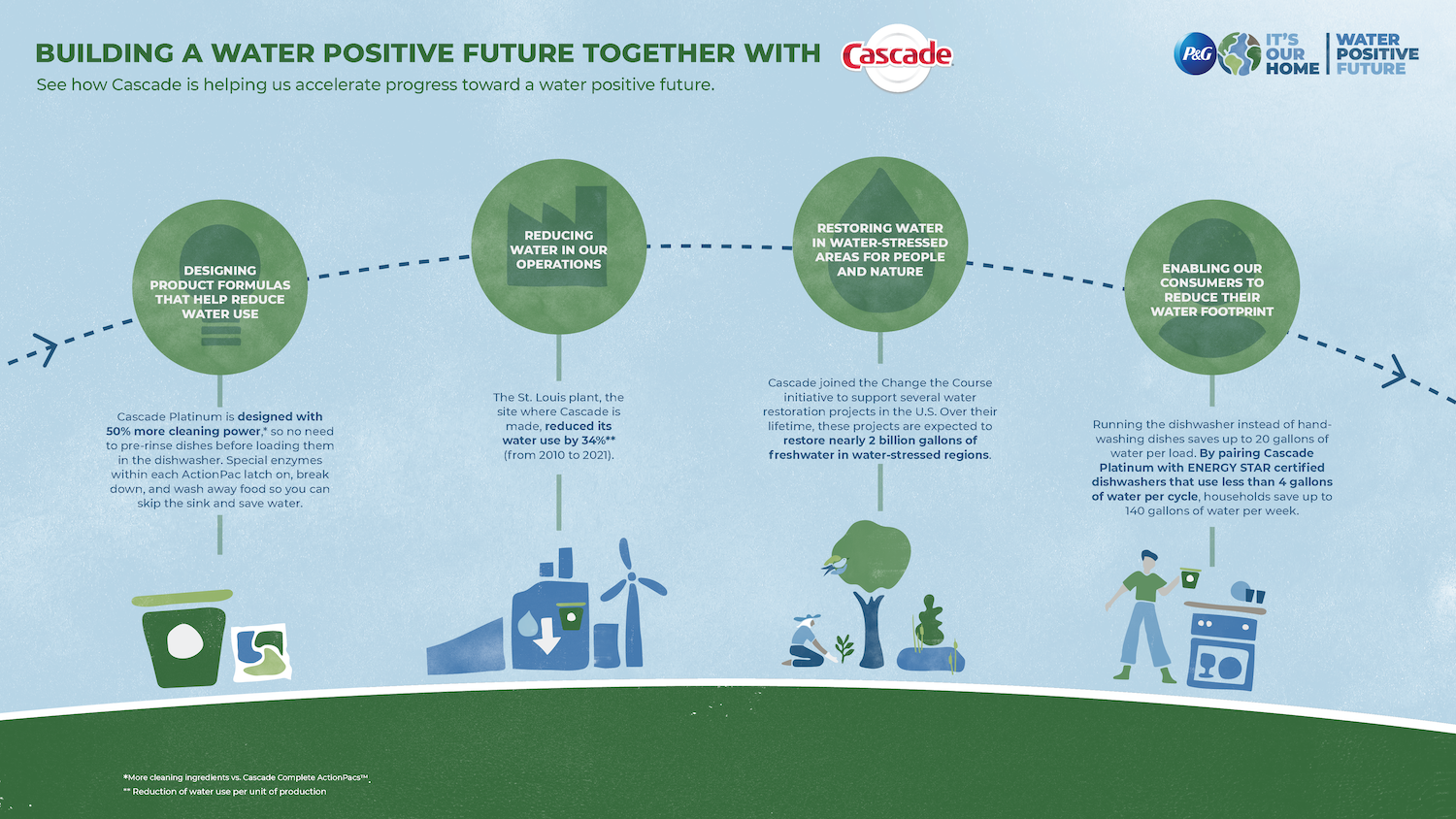Racial Equity in Corporate America: Some Glimmers of Optimism


After the death of George Floyd, American corporations committed to advancing equity and racial justice in the workplace, arguably with more fervor than seen in the past several decades. Just Capital, a nonprofit dedicated to tracking and inspiring corporations to adopt more just and responsible practices, provides a tracking mechanism called the Corporate Racial Equity Tracker (CRET) to measure how well those commitments are being fulfilled.
Data recently released from the 2022 CRET reveals a pattern of commitments that are long on promises but considerably shorter on actionable practices and measurable results. In the report, six categories are dominant as they relate to corporate racial equity: anti-discrimination policies, pay equity, racial and ethnic diversity data, education and training programs, responses to mass incarceration, and community investments.
But analyzing whether or not commitments are being met first depends on the corporations’ willingness to report. For example, only 43 percent of companies polled reported data on pay equity. Responses to mass incarceration was reported at a frequency of 45 percent.
It’s difficult not to conclude that no reporting is indicative of no action; after all, even a poor score reflects some effort. Nondisclosure also equates to the absence of accountability and transparency.
The categories that are most reported — anti-discrimination policies at 98 percent, racial and ethnic diversity data at 98 percent, and education and training programs at 91 percent — represent objectives that can be met, in some cases, based on publications and nose-counting alone. In other words, more than publishing an anti-discrimination policy, how is the effectiveness of an anti-discrimination policy intrinsically measured?
For those companies reporting data, a comparison from the 2021 CRET results to 2022 shows some improvement. Workforce diversity data disclosure increased from 86 percent to 91 percent. Board diversity data disclosure increased from 84 percent to 95 percent. Racial and ethnic pay equity analysis disclosure increased from 34 percent to 45 percent. Disclosure of pay ratios increased from 14 percent to 24 percent.
Other categories also reflect a dismal rate of reporting. Only 7 percent of companies disclose their promotion rate by race and ethnicity. Twenty-one percent report providing anti-harassment training, compared to 98 percent of companies that disclose an anti-harassment policy. In addition, only 22 percent disclose the actual results of the pay equity analysis, i.e., pay ratios by race and ethnicity.
But polling proves that commitment to the cause of racial equity is what’s expected. The 2022 CRET reports that 92 percent of Americans say that it is important for companies to promote racial equity in the workplace.
There are two realities for a corporation to consider when it comes to lack of reporting and the need to improve the percentages. The first reality is, get used to it. Corporate America will be subject to increasing scrutiny by stakeholders and investors in the areas of environmental, social and governance (ESG). ESG rankings are indicators of risk, as in who is getting the job done in the present with efficient and sustainable ways of doing business and anticipating the future.
Credit rating agencies like Moody's, S&P and Fitch report ESG ratings. Investors and other stakeholders are paying close attention to rankings and reporting, and most can tell the difference between a substantive program and padding.
The fact that Facebook dropped 700 places out of 1,000 companies ranked is a big deal. Sustainalytics, a sustainability data and analytics firm, gave Tesla a “medium” ESG risk rating, citing weak product governance and other issues—news that made headlines.
And, companies are now more likely to be ranked according to these ESG scores. In 2022, Just Capital ranked Alphabet as number one on ESG metrics. Intel, in the number 2 spot, led Microsoft, followed closely by Salesforce. Salesforce is in the news of late for circulating an employee petition, signed by more than 4,000, to drop the NRA as a client. Examples of employees driving corporate social responsibility (CSR) are plentiful.
As part of the American corporate landscape, the importance of achieving racial equity depends on whether or not corporate leaders subscribe to the notion that a more just company can be more profitable where profitability implies a satisfied, productive workforce.
But the second reality associated with corporate racial equity is that it’s the right thing to do. Surely, there is a point where profitability and societal responsibility can intersect. Corporations would do well to pursue that sweet spot where reporting is more than a satisfactory experience.
Image credit: Kelly L via Pexels
With Plastic Waste Expected to Triple By 2060, The U.S. Announces A Plastics Ban…Sort Of


A new report from the OECD outlines the world’s current plastic use trajectory, arriving at the stark conclusion that our rate of plastic waste will nearly triple by 2060 if no intervening action is taken. The report, titled Global Plastics Outlook: Policy Scenarios to 2060, is set to be released in full on June 21, 2022.
Highlights of the report have been pre-released and include three different scenarios of future forecasting: a baseline scenario with no major changes, a “regional action” policy scenario, and a “global ambition” policy scenario.
Visualizing our mounting plastic waste problem
Under the baseline scenario of forecasting, plastics use is projected to grow from 460 million tons (Mt) in 2019, to 1,231 Mt in 2060. Meanwhile, plastic waste is set to expand from 353 Mt to 1,014 Mt in the same time frame.
Those numbers are hard to wrap your head around. What does one million tons of plastic waste even look like?
Let’s do some math and find out.
A standard plastic container for takeout food weighs about 25 grams, and there are about 450 grams in one pound. Quick math, how many takeout containers in one pound? Right. That’s eighteen takeout containers in one pound.
2,000 pounds in a ton means there are 36,000 takeout containers in one ton. That means 36 billion takeout containers in one million tons. Still with me?
In 2019, there were 353 Mt of plastic waste; that’s 12.7 trillion takeout containers. Woah. Bear in mind as well that a lot of plastic waste comes in much smaller forms like straws, cutlery, cups, and bottles. The moral of the calculation is that we have a serious plastic waste problem.
The report notes an expected tripling of our plastic waste by 2060. So, what can we do?
Recommendations on tackling plastic waste
The report channels its recommendations into four key areas. It advocates for economic incentives to grow the recycled plastics market, boosting innovation for a more circular lifecycle, strengthening domestic policies, and strengthening international cooperation.
Of the plastic waste generated, only 15 percent of it is collected for recycling, but a big chunk of that ends up as recycling residue that still needs disposal. Thus, only 9 percent of all plastic waste in 2019 ended up getting recycled. As it stands, recycled plastics only make up 6 percent of the total plastic feedstock.
The recommendations of the report focus on pushing governments and international organizations to enact policies and legislations that can help reduce plastic use, and ultimately, plastic waste. Plastic waste poses a large threat to our natural environments.
In 2019, 6.1 Mt of plastic waste ended up in rivers, lakes, and oceans (we’ll save you the heartbreaking photo of marine life impaired by plastic pollution). But plastic harms extend beyond surface-level damage.
The production of plastic also takes a toll on the atmosphere, with most plastics being made from fossil fuels. Plastics generated 3.4 percent of global greenhouse gas emissions in 2019.
Legislation against single-use plastics
On Wednesday, the U.S. announced it would begin to phase out single-use plastics. This announcement has been a long time coming and should arrive as welcome news to Americans.
However, the announcement leaves a lot left to be desired. The ban will not come into effect until 2032, and it will only cover national parks and other public lands. Surely, this will not satisfy the authors of the OECD report, nor should it satisfy the general public. The announcement is a far cry from concrete action that’s being taken in other countries.
Australia has outlawed all single-use plastic bags, with some states banning other single-use plastics as well.
China has a ban on plastic straws and plastic bags that started on January 1, 2021.
India is beginning a nationwide ban on single-use plastics July 1. Canada has a plastics ban expected to come into force in late 2022. Scotland’s plastic ban came into effect on June 1, 2022, banning almost all single-use plastics.
Major economies around the world are moving to outlaw the use of single-use plastics, but the world’s largest culprit of plastic waste, the U.S., is dragging its feet on the matter.
While we wait for more robust government legislation, we could all cut back on our own plastic use in an effort to reduce the 12.7 trillion takeout containers worth of plastic waste produced each year.
Image credit: Pixabay
Vegan Cheese is Here to Stay, But the Awful Taste Isn’t


Veganism might not seem like a difficult lifestyle change for a health-conscious planet warrior. But mess with someone’s mozzarella and they may change their tune. Vegan cheese, however, is evolving, and doing so for the better.
Studies show that eliminating cheese is among the hurdles that people face when transitioning to a plant-based diet. If you’ve tried any of the various kinds of vegan cheese, you probably understand why. To many consumers considering changing how they eat, plant-based cheese alternatives don't often live up to their dairy-containing counterparts. Now, the brand So Delicious Dairy-Free is doing its part to change such perceptions with its plant-based lineup.
So Delicious and the transformation of cheese
The company, which has been in business for more than 30 years, says it is devoted to providing superior plant-based cheese that competes with the real thing. All So Delicious products are dairy-free, gluten-free, soy-free and are also verified by the Non-GMO Project. Its "more than the minimum" philosophy promotes thoughtful choices in all business facets: ingredient sourcing, packaging and a commitment to diversity, equity and inclusion.
For National Cheese Day earlier this month, the company even awarded one contest winner an entire year of free So Delicious cheese products. The goal of So Delicious is to create cheese with the same commitments as its other dairy-free products, all while keeping taste at the top of the requirement list.
Once occupying a small niche market, vegan cheese is here to stay
Globally, the vegan cheese market was estimated at $2.5 billion in 2021, and is expected to grow almost 13 percent by 2030. Plant-based lifestyles, particularly among millennials, has boosted this expansive growth. Currently just over 60 percent of U.S. households are currently buying plant-based products.
Over the last decade, the popularity of plant-based food products and lifestyles has skyrocketed. Awareness of animal cruelty, the negative impacts on the environment caused by the dairy industry, and rising acceptance of various health-related allergies such as lactose intolerance, have all contributed to making veganism and flexitarian diets more mainstream.
Vegan and vegetarian diets are expected to revolutionize the food industry world-wide. More restaurant companies are putting themselves on the map to include diet-friendly menu items. Fast food chains including KFC and Burger King have been test marketing plant-based chicken, Chipotle added vegan chorizo, and Cold Stone Creamery has rolled out an almond-based ice cream — the list goes on.
Large franchised chains are seeing these long-term trends and are jumping on the all-inclusive bandwagon. Not only will food corporations see a spike, but even vegan food tourism will continue to grow as demand for plant-based food does the same.
The links between dairy production and climate change
Switching to plant-based cheese can reduce carbon emissions by 50 percent compared to dairy cheese, but studies show that many shoppers do not fully understand how greenhouse gas emissions are tied to food production.
Manure produced by dairy cows creates greenhouse gas emissions, and when handled incorrectly, can taint local water resources. Additionally, unsustainable farming practices can affect the future of prairies, wetlands, and forests, all of which are ecologically essential.
On top of that, consumers often think that meat production alone has the biggest effect on climate change. According to the World Economic Forum, the dairy cheese industry emits more greenhouse gasses than the production of pork, chicken and eggs.
A recent study completed in the U.K. suggests that vegan cheeses produce less than half of the climate impacts and require less than one-third of the land compared to dairy-based cheese.
When passion becomes palatable
Whether they lie in concern over animal rights, personal health, the planet or otherwise, the reasons to try vegan cheese certainly speak volumes. On that point, So Delicious Dairy-Free and other plant-based food companies are furthering their mission to make the taste of their products equally as enticing.
Image credit: So Delicious
Yes, Decarbonization Can Absolutely Generate Business Opportunities


Sure, there is far more to ESG (environmental, social and governance) than the “E,” but also think of that E for environmental as “R” for revenue, as the disruptive decarbonization technologies required to get the world anywhere toward a low-carbon economy will require massive amounts of investment.
“Getting to net-zero by 2050 will require $3.5 trillion of investment a year. Governments don’t have this capital — it must come from private sector,” said Elizabeth Lewis, Blackstone's managing director and deputy head of ESG during a sustainability conference hosted by The Economist in Washington, D.C. last week.
Not that investors should be seeking out any quick returns within this rapidly evolving space. “Plans for decarbonization requires planning now to reduce emissions into the future. Investors must be patient, as they’ll need to think long-term,” Lewis noted.
Lewis was among the ranks of sustainability leaders who spoke during The Economist's second annual Sustainability Week U.S., the lineup of which featured many global brands, officials from the Biden administration and various elected leaders.
Learn more about Blackstone's recent ESG work here.
Image credit: Ashraf Chemban via Pixabay
Getting Our Heads Wrapped Around All That ESG Data


ESG (environmental, social and governance) ratings and rankings are at an inflection point; among the reasons is that there are so much data out there that it’s hard to gauge what’s compelling and what creeps into green- and purpose-washing. So, how exactly can sustainability professionals actually collect this information, what can they do with it and how do we drive sustainable decision making?
As Mandi McReynolds, who heads global ESG at Workiva, the first problem to confront is that stubborn "trust issue" — as someone who has done more than her fair share of surveying investors, she added that the trust issue conflicts both institutional and individual investor alike.
“There’s a trust crumbling and quality crumbling, so you need a strong strategy and solution-driven systems,” McReynolds said earlier this week at a sustainability conference earlier this week hosted by The Economist in Washington, D.C. “You can’t chase everything — so you chase what are the strong data drivers.”
Among the concerns of investors she’s found while conducting research, McReynolds shared that one of their largest worries is what is occurring as a result of their companies’ operations. For example, one survey Workiva recently completed found that 50 percent of sustainability professionals had doubts whether the data they were supplying to their stakeholders was accurate and timely enough.
Earlier this year, McReynolds offered three high-level suggestions on how companies along with their executives, boards, investors and stakeholders can best gauge the links between ESG and value creation. First, focus on those ESG challenges that matter the most; next, be sure to accurately identify those business value drivers; and finally, keep reviewing and updating the company’s value chain.
Bottom line, think of ESG materiality and data as the horse-versus-cart scenario: Companies need to identify what absolutely matters before they sort through all those copious amounts of data.
Nevertheless, more guidance from the folks on Capitol Hill and down the street on Pennsylvania Avenue would offer a lift. Late last month, Workiva was among the companies offering public support for the Financial Data Transparency Act (FDTA), which if passed into law, would instruct eight major U.S. financial regulatory agencies to implement uniform data standards for the information they are already required to collect from any companies subjected to U.S. federal disclosure laws.
McReynolds was among the sustainability leaders who spoke during The Economist's second annual Sustainability Week U.S., the lineup of which included many global brands, officials from the Biden administration and elected leaders from across the United States.
Image credit: Adobe Stock
How Pride and Purpose Within and Beyond Lego Drives Its 'A-Z of Awesome' Campaign


Lego kicked off this year’s Pride with its “A-Z of Awesome” campaign — through which the toymaker seeks to engage the LGBTQ community in building an alphabet of representation while encouraging families to explore and discuss their different identities. This campaign continues the toymaker’s recent strategy of actively promoting representation and creativity in play and pursuing profit through purpose-driven means.
“A-Z of Awesome” will run through 2023. During this time, the brand is asking its enthusiasts and employees alike within the LGBTQ community to assist in creating the alphabet. By exploring the letters behind the abbreviations, Lego hopes to “build understanding and acceptance” — that is, according to the campaign’s press release. Those who would like to participate are invited to visit the website and pick a word from the alphabet. Builders are asked to use the hashtag #AtoZofAwesome to share their creations on social media and include an explanation of what their build means to them.
Examples of the alphabet currently on display include a colorful bed of flowers under a big striated Q for Queer, by Lego builder Marko—who is quoted on the site as saying, “Queer isn’t an easy term to explain. It represents lots of different things to different people. But it’s the coming together of varied parts of the community that represent its true strength and beauty. You just need to look at it from the right angle…” For those who prefer using the LGBTQAI+ acronym, A is for Asexual, another builder created a snapshot of the beauty of a full life, including a bike ride through a park accompanied by a four-legged friend. Kami is quoted as describing the motivation behind the scene: “In my experience coming to my identity, I found that the world is full of so much beauty and wonder. Color, music, texture, art . . . I can’t imagine a world without these things being a center point of life. And spending time with my dog is cool too!”
“The A-Z of Awesome” campaign comes at a time when reports of harassment and discrimination directed at LGBTQ citizens are rising. More than half of LGBTQ students who took part in the most recent National School Climate Survey reported feeling unsafe at school because their sexual orientation could make them a target. This held for just under half of students who feared the same because of their gender expression. Thirty-seven percent said that their gender alone was enough for them to feel unsafe. While a toymaker can’t be expected to fix statistics like that, by creating a place of expression and representation Lego certainly appears eager to do its part to change the social climate.
Hang out in the comments section of “A-Z of Awesome” social media ads long enough and accusations of rainbow-washing will inevitably appear. But while many corporations do just slap a few rainbows on in June to make a quick buck, Lego’s commitment comes across as genuine. The company works with a number of partners year-round in order to promote inclusion and representation — including Open for Business, Stonewall and Workplace Pride. And the toymaker responded to research showing that stereotype-based toys are harmful to all children by committing to remove genderization from its products and marketing — partnering with the Geena Davis Institute since the beginning of 2021 to ensure accountability in this initiative.
Pidgeon Pagonis, a contributor to the “A-Z of Awesome” campaign who is also intersex, broke down the importance of gender-neutral toys, explaining via the public statement, “Growing up I remember feeling this sense of shame, like oh there’s something wrong with me, or the things I desire or want.” They went on to explain how the campaign could help others, “This project is important because there might be an intersex person out there who likes to build with LEGO bricks, and this can help them see themselves represented. It would have been a game-changer for me to see myself reflected in stories in popular media and culture.”
The A-Z of Awesome campaign continues Lego’s commitment to a purpose-driven model of business based on inclusion and representation. As consumers come to expect more from the businesses that they spend their money with, the popular Danish brand is making the right moves to cement itself in the hearts and minds of an ever-growing fanbase.
Image credit: Lego
P&G Announces a Water Positive Future Strategy: Our Vision to Reduce, Restore and Respond


This article is sponsored by Procter & Gamble
My passion for water is in my genes. Jacques Oudin was not only my father but a member of the Senate of France where he developed and passed the Oudin-Santini law in 2005. That legislation allowed local authorities, trade unions and water agencies to devote up to 1 percent of their water and sanitation budgets to aid international projects that help restore and protect water. This international financing approach established a framework for decentralized cooperation in water and sanitation, establishing a model to encourage adoption by other countries to unlock new flows of financing and inspire collective action for water and sanitation.
His legacy continues to inspire me every day.
Seventeen years since his effort, many regions of the world still face extreme water stress. In fact, the United Nations projects that by 2025, two-thirds of the global population will live in water-stressed areas. This stark statistic illustrates the need for all of us — individuals, communities and companies — to take collective action to protect this precious resource.
At P&G, we want to help build a water positive future that can sustain people and nature, now and for generations to come. We know working toward a water positive future requires widespread solutions, collective actions and bold innovations.

We have just announced our comprehensive strategy toward a Water Positive Future.
As always, this responsibility to act starts in our own operations to conserve local water supplies. Our 138 facilities around the world continue to advance on-site water efficiency solutions and partner to develop new technology to increase use of recycled water, effectively achieving results toward the goals we set forth in Ambition 2030.
That’s why we are announcing two new water goals: to restore more water than is consumed at P&G manufacturing sites located in 18 water-stressed areas around the world, and a new commitment recognized as first-of-its-kind to restore more water than is consumed during consumer use of our products in the high water-stressed metropolitan areas of Los Angeles and Mexico City.
Our new goals focus on addressing the water that does not go back to local systems from our operations and, for the first time in our industry, from consumer use of products. "Water consumed" is the water that evaporates or is included as a product ingredient during the manufacturing of our products. And for consumers, we define "water consumed" as the water that leaks from household pipes or evaporates during the use of our products.

We are already advancing long-term water restoration projects in critical areas of the U.S. in California and Arizona, working with on-the-ground partners who have a deep knowledge of local challenges, solutions, communities and landscapes. We now extend our support for new water restoration projects in Utah and Idaho. And in the coming years, we plan to announce projects in our other priority water-stressed areas around the world, including China, India, Mexico, Italy, Spain and Turkey (see above).
These projects will support a wide range of water restoration solutions such as managing wetlands, reforesting land, improving irrigation systems, using sensors to identify and stop leaks, and supporting transformational conservation programs. Together, they will help protect ecosystems, recharge groundwater supplies, reduce the amount of water diverted from essential bodies of water, and improve water quality for the communities and wildlife that depend on it.
But P&G also has a unique opportunity to inspire more sustainable use of water among the 5 billion consumers around the world who use our products every day. Using our experience in innovation and consumer understanding, we are unlocking new solutions to water challenges that enable our consumers to reduce their water footprint.
In 2019, we achieved our goal to provide one billion people with access to water-efficient products. Cascade, Tide, Downy, Swiffer, Pantene, H&S, Herbal Essences and others brought their innovative formulas to consumers all over the world to enable people to reduce in-home water use during everyday household activities.
Today, together with our brands, we continue to create and share products, tools and information to help our consumers use less water at home. For example, by skipping the sink with Cascade and choosing the dishwasher, households can save up to 140 gallons (around 530 liters) of water per week. We are also excited about product development innovations from Pantene and Rejoice to formulate No Rinse Conditioners that enable people to condition and nourish their hair without the need for water.

Beyond these efforts, we know collective action must continue to make everyday living more sustainable.
As founding members of the 50L Home Coalition, a collaboration with other global public, private and NGO leaders, we are pushing to reinvent the future of urban water use in homes that can use 10 times less water than most use today.
The path forward will be challenging. The challenge is urgent, difficult and bigger than us. P&G is more than ever committed to doing our part to care for our shared home.
Throughout this journey that I help lead at P&G, I always carry with me my father’s vision for a more equitable and sustainable water future, embracing his pursuit of collective global action to drive impact at scale.
Learn more about our strategy toward a water positive future: P&G's Strategy Toward a Water Positive Future, P&G Unveils a New Strategy to Help Address Global Water Crisis, A Closer Look at P&G’s New Strategy to Help Address the Global Water Crisis, and 2021 Citizenship Report.
This article is sponsored by Procter & Gamble
Images courtesy of P&G
Sustainability Top of Mind for CEOs and Boards, IBM Survey Reveals


Corporate investment in sustainability has more than doubled as a percentage of revenue over the past five years, according to new research conducted by IBM.
Interviews with 3,000 CEOs across multiple industries and geographies found that the push to become a more sustainable company continues to rise as a key business priority, with 80 percent saying a focus on sustainability will drive improved business results in the next five years.
“There’s a huge amount of optimism,” Phil Spring, executive vice president and partner at IBM Consulting told attendees at a Reuters conference in London Wednesday, adding that two-thirds of the CEOs surveyed are confident they will achieve their sustainability goals.
Other key findings reported in the latest annual IBM CEO study include:
Almost half, or 48 percent of surveyed CEOs say increasing sustainability is a top priority — up 37 percent since 2021.
While 95 percent of CEOs indicate they have at least begun piloting such a strategy, just 23 percent say the initiatives are being implemented across their entire organization.
Investment in sustainability as a percentage of revenue more than doubled over the past five years.
Nearly 70 percent of surveyed CEOs say they are directly involved in defining their organization’s sustainability strategy.
Further, 51 percent of respondents cite becoming a more sustainable operation as among their greatest challenges in the next two to three years, citing unclear return on investment and technology barriers as hurdles.
Among stakeholders exerting the most pressure around sustainability are board members, 72 percent; investors, 57 percent; ecosystem partners, 49 percent; regulators, 49 percent; and government, 46 percent.
Additional top challenges confronting CEOs include regulation, 50 percent; cyber risk, 45 percent; technology infrastructure, 41 percent; and supply chain disruption, 38 percent.
“There’s a huge amount of variability and we really wanted to look at the bigger picture of what sustainability means (to CEOs),” Spring told attendees at the Responsible Business Europe conference, an event this past week that focused on an environmental, social and governance (ESG) agenda.
Image credit: Bastian Pudill via Unsplash
Carbon Capture and Sequestration Loses Ground to Carbon Recycling


Fossil fuel stakeholders continue to tout carbon capture and sequestration as an effective strategy for picking up the pace of global decarbonization, but they have yet to prove their case. The argument in favor of underground carbon sequestration has become even more difficult to prove with the advent of new carbon recycling technology, as recently illustrated by the latest breakthrough from the firm LanzaTech.
Many paths leading from carbon recycling to a decarbonized economy
In partnership with Danone and other collaborators, LanzaTech has just reported a new process for converting waste gas to PET plastic.
PET is commonly used for beverage bottles and other throwaway items, so it is fair to ask if continuing to produce throwaway plastic is a sustainable strategy, whether it is made from recycled carbon or not.
Microplastic pollution has emerged as a critical environmental and public health issue, and it could continue to be a problem whether PET is produced from recycled carbon or not. The problem is that there are no simple alternatives.
Biodegradable plastic substitutes could help reduce microplastic impacts related to petrochemical pollution, but land use issues need to be resolved before the global bioeconomy can scale up to replace petrochemicals at scale.
Glassware could replace plastic for bottles and other uses. However, glass is heavy, leading to energy-related issues for shipping and transportation. A widespread return to glass packaging would also run into competition with the construction industry and other economic interests for the global supply of high-quality silica sand.
Above all, coaxing individual consumers into adopting reusable models for their daily needs is a monumental task. Startups like Loop are beginning to spark more interest in reusable consumer packaging, but so far reusables are a vanishingly small part of the market.
A sustainable role for plastics from recycled carbon
If PET and other plastics continue to be a prominent feature in the global economy for the foreseeable future, carbon recycling will continue to be an important strategy for keeping virgin carbon — oil, gas or coal — in the ground.
LanzaTech has previously developed a fermentation-based system for capturing and recycling carbon from steel mill biomass waste gases and biogas, in which the company’s proprietary microbes digest carbon-rich gases to produce the building blocks for petrochemical equivalents. Initial products included ethanol and 2,3 Butanediol, which is a building block for plastics and other substances.
The new LanzaTech-Danone collaboration has added another important petrochemical equivalent to the list, monoethylene glycol, (MEG), a syrupy, liquid substance with many end uses.
“The carbon capture technology uses a proprietary engineered bacterium to convert carbon emissions directly into MEG through fermentation, bypassing the need for an ethanol intermediate, and simplifying the MEG supply chain,” LanzaTech explains.
“We have made a breakthrough in the production of sustainable PET that has vast potential to reduce the overall environmental impact of the process,” added Dr. Jennifer Holmgren, LanzaTech's CEO.
Recycling carbon for the sustainable economy of the future
As of this writing, the LanzaTech breakthrough has passed the proof-of-concept stage. If the technology reaches the commercial market, the impact on the global economy will be significant, as indicated by an MEG fact sheet produced by Shell about 10 years ago.
“Mono-ethylene glycol - or MEG - is a vital ingredient for the production of polyester fibres and film, polyethylene terephthalate (PET) resins and engine coolants,” Shell explained. “End uses for MEG range from clothing and other textiles, through packaging to kitchenware, engine coolants and antifreeze.”
Shell also listed polyester and fleece fabrics, upholstery, carpets and pillows, light and sturdy polyethylene terephthalate drink and food containers, paper, adhesives, inks, and more.
“Global MEG demand was around 21 million tonnes in 2010. Forecasts suggest that by 2015, demand could be above 28 million tonnes per year,” Shell added.
The MEG market has continued to expand since then. As of January 2022, the firm Transparency Market Research noted that “increasing use of monoethylene glycol in the textile industry is likely to foster the growth of the global monoethylene glycol market during the forecast period, from 2021 to 2031.”
“Demand for monoethylene glycol is increasing rapidly across Latin America and the Middle East & Africa, owing to expanding PET and polyester usage in these regions,” the report forecasted.
That could be the tip of the iceberg. LanzaTech’s new breakthrough is not the only worrisome development for fans of carbon capture and sequestration. Carbon recycling is also beginning to emerge in other market areas, including spirits and perfumes.
Image credit: Jasmin Sessler via Unsplash
The Midterms are Coming: Here’s How to Not Drop the Voting Rights Ball


Washington, D.C., June 2022.
Business leaders who profess to support their employees on women’s rights, LGBTQ equality and other critical issues have a chance to prove their sincerity this year, as the all-important midterm elections approach. Even though 2022 is not a presidential election year, the outcome of Election Day and how voting rights prevail could have a significant impact on corporate diversity, equality and inclusion programs -- and not in a good way, if the Republican party gains control of the House and Senate.
Why the midterms matter
Many voters appear to believe that the president of the United States can pass legislation with a wave of their pen, but that is not the case. The president can only sign bills into law that have passed Congress – the House of Representatives and the Senate. If the president is to achieve their legislative goals, their party needs to control a working majority in both the House and the Senate.
However, getting Democratic voters to the polls is going to be a challenge, this year more so than others.
According to Pew Research, the mid-term voting drop-off has been a fixture among the U.S. electorate since the 1840s. The balance of power in Congress would not necessarily change just because fewer people vote in the midterms. However, state-based Republican leadership has taken two key steps to ensure that the Democratic party loses its current majority in Congress: suppressing the Democratic-leaning Black vote and other communities of color, and drawing new district maps for the House that exclude Democratic-leaning voters.
In addition, Republican leadership in Congress has taken steps to ensure that the “presidential penalty” is in full force. With the assistance of the 60-vote filibuster threshold and two Democratic Senators (Joe Manchin and Kyrsten Sinema), the Republican minority in Congress has succeeded in blocking major parts of President Biden’s policy agenda. The effort all but ensures that many voters who cast their ballot for Biden in 2020 will be let down by Election Day 2022. They will either not vote at all, or they will vote for other Congressional candidates, not Democratic candidates.
All is not lost…yet
As of this writing, it appears that state-based efforts to gain a Republican majority in Congress may not have quite the impact that Republicans anticipate.
On redistricting, the Republican Party hoped to gain seats in the House through new state district maps drawn by Republican leadership. However, some analyses show that the Republican Party actually stands to lose seats overall.
Editor's note: Be sure to subscribe to our Brands Taking Stands newsletter, which comes out every Wednesday.
Meanwhile, earlier this week reporter Alex Samuels of the data-driven news organization 538 drew attention to evidence that voter suppression efforts can backfire.
Unfortunately, business leaders who support the DEI movement cannot take heart from either one of those news items. If Republicans gain a majority in the Senate, they will continue to block the Democratic agenda, regardless of which party controls the House.
More to the point, Samuels throws cold water on the idea that the backfire effect can overcome voter suppression laws.
Citing the example of Georgia’s new voter laws on turnout for the state’s May 24 Primary Election, she wrote:
“It’s important to remember, though, that you can’t out-vote or out-organize voter suppression tactics, and it would be disingenuous to say that the new restrictive laws had no tangible effects on voters since we just don’t know, for instance, how many people didn’t vote or experienced difficulties because of the new law.”
“On top of that, since primary elections tend to draw highly engaged voters, it’s way too soon to draw any conclusions about the effects of these new laws. That means that the real test of these restrictions will likely come in November,” she added.
More voting rights obstacles to overcome
In fact, business leaders who support DEI need to be more aggressive than ever in turning out the vote in Democratic-leaning communities this November. Redistricting, voter suppression and the “presidential penalty” are not the only tools in the Republican toolkit.
Voting rights stakeholders have also begun to raise alarms over Republican efforts to control the electoral machinery itself. Last January, Matt Vasilogambros of the Pew Charitable Trusts publication Stateline observed:
“The pervasive myths of a stolen 2020 presidential election and widespread voter fraud are still dominant in many state legislatures, as Republican policymakers call for more investigations and reshape election administration in a way that could give them a partisan advantage.”
Citing the example of Georgia, he wrote that “the Republican-led State Election Board could use a new state law to install partisan officials on county election boards in Democratic-leaning areas, giving them the power to decide which ballots to reject or even overturn results.”
Another highly concerning factor is the confluence of gun rights fetishism with the intent to overthrow the results of a legitimate election by force, as amply illustrated by the failed insurrection of January 6. Were it not for tight gun restrictions in Washington D.C., the bloodthirsty mob that attacked Capitol Building that day could have easily outgunned the Capitol Police and carried out its threat to murder Vice President Mike Pence, among others.
It is no accident that the Republican-appointed, conservative majority on the U.S. Supreme Court appears inclined to undermine state-based gun restrictions, opening up the potential for more lethal violence at the heart of the legislative process throughout the U.S.
Corporate Action 101: follow the money
If the Republican Party gains control of the Senate in 2022 and beyond, business leaders can look forward to a wave of Congressional actions that amplify and reinforce the Party’s state-based efforts to undermine the corporate DEI movement.
Instead of supporting DEI as a matter of federal policy, Congress is likely to pass bills that pull back LGBTQ rights, impose state and community policing on pregnant people, and suppress Black voters and others who lean Democratic, in addition to relaxing gun regulations and rolling back federal action on climate change and environmental protection.
In short, corporations with DEI programs are in the middle of a nationwide existential fight, which they will lose if they fail to apply every tool in their own toolkits. Corporate leaders need to make clear, beyond any shadow of a doubt, where they stand on support for the democratic process and the rule of law.
A good place to start would be the January 6 Committee hearings, which are scheduled to begin on Thursday, June 9. The Thursday hearing will take place at 8:00 p.m., during television’s influential primetime. Business leaders can and should encourage their employees, and the public at large, to watch the hearing and see with their own eyes the evidence of Republican complicity in an effort to overthrow the democratically elected government of the United States of America, the very nation that styles itself as the upholder of universal democratic principles to the entire world.
To follow up, corporations need to pour more resources into their get-out-the-vote efforts. That doesn’t mean more public service announcements and social media campaigns. That means hardcore financial support, such as providing paid time off to vote on Election Day, time off to participate in the process as a poll worker, and time off to participate as an official poll watcher, as well as providing financial support for voter clinics and legal resources for voters caught up in suppression laws.
Above all, business leaders need to take a good, hard look at their financial support for Republican elected officials and candidates. Many corporations talk a big talk on human rights and civil rights, but they fail to exercise their financial power when Republican candidates and political action committees come calling for campaign contributions.
The time for compromises is over when the Republican Party adopts the position that it is forever entitled to hold office, by force if necessary, regardless of the will of the voting public.
Business leaders should not be lulled into complacency by the redistricting results, the backfire effect, or any other suggestion that the Democratic Party is likely to hold Congress after the midterms. They must be vigilant and press every opportunity to ensure that every eligible voter has access to the ballot box – and that the will of voters determines the final result on Election Day 2022, not administrative partisanship or physical violence.
Image credit: Leon Kaye